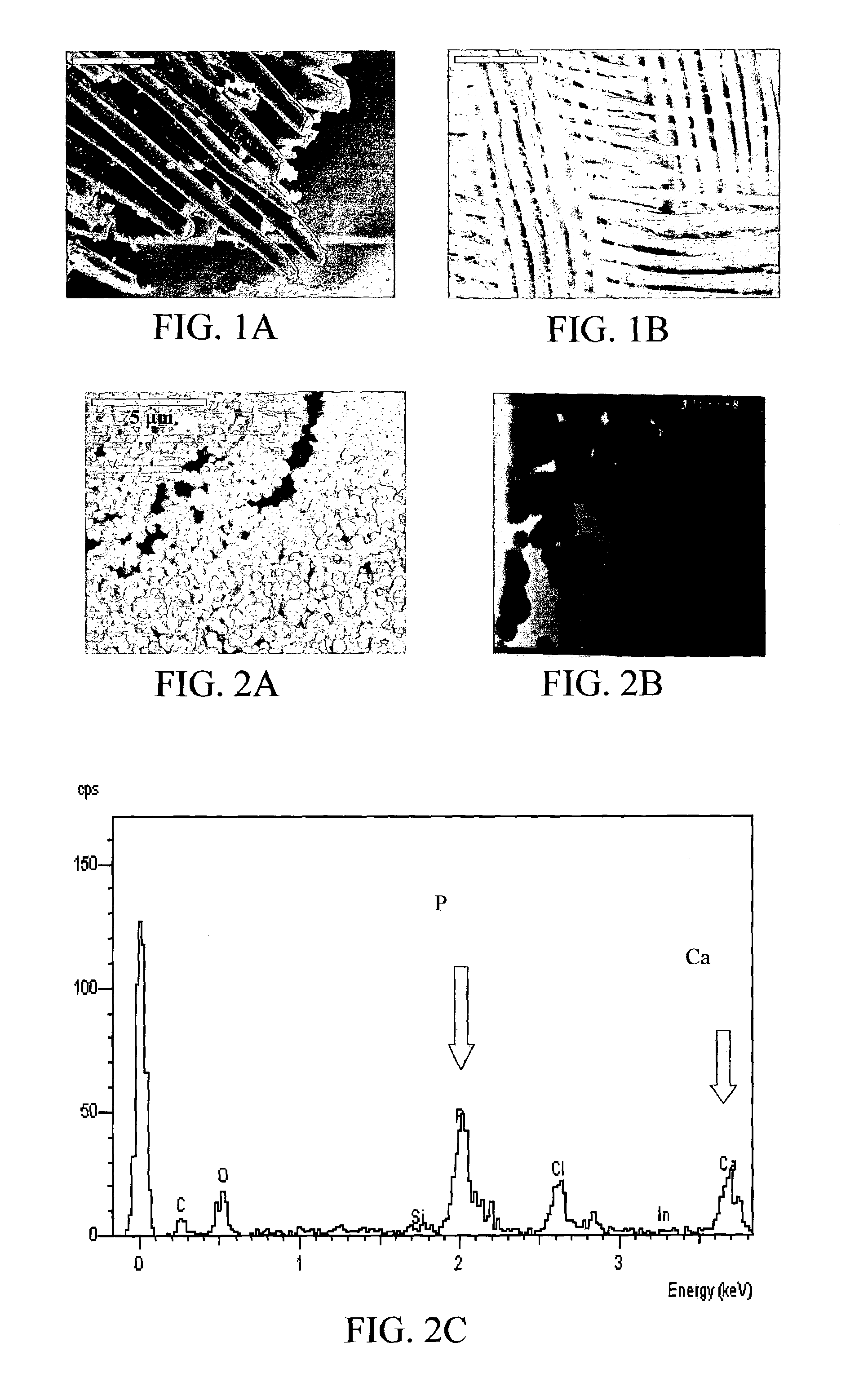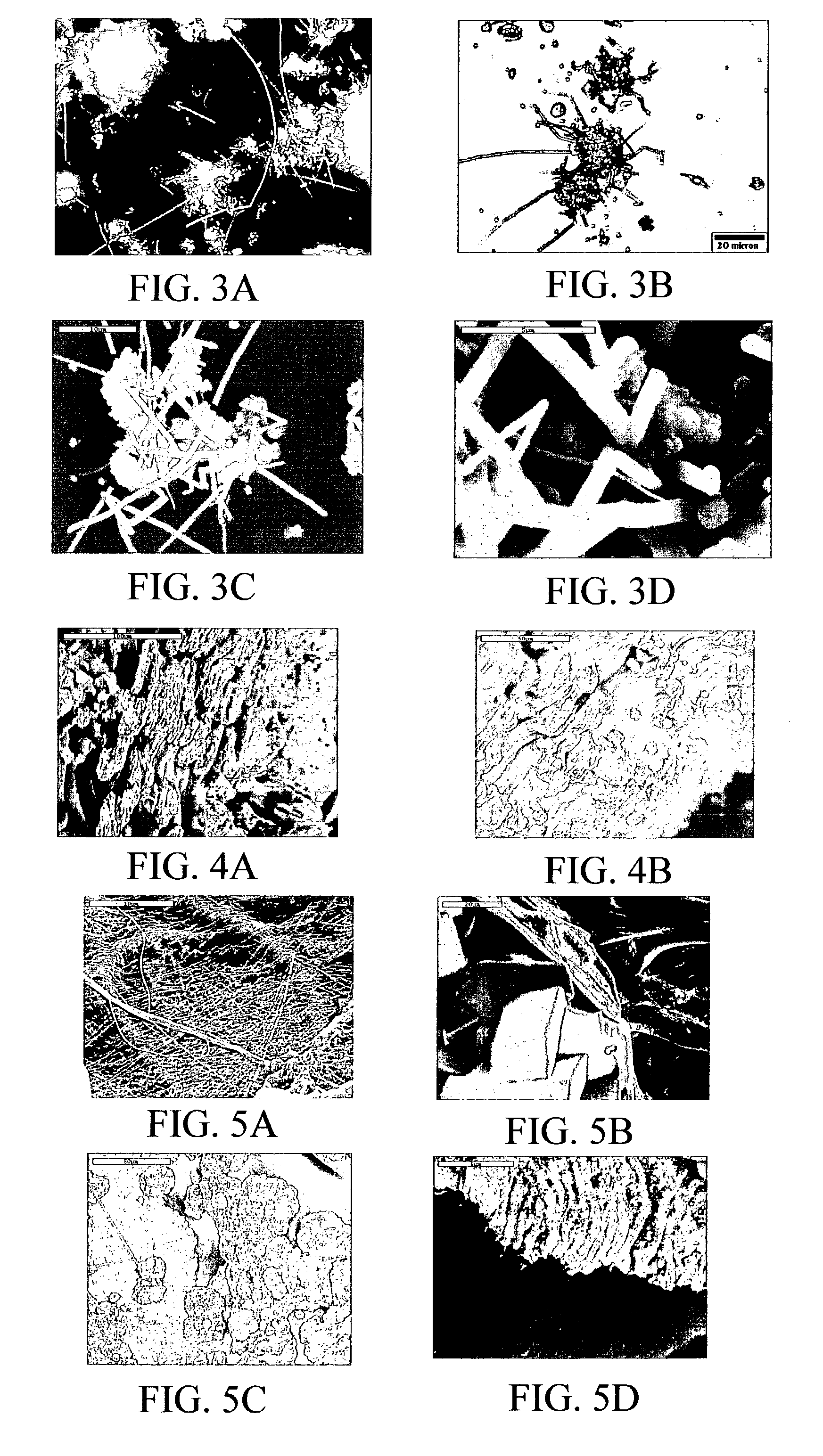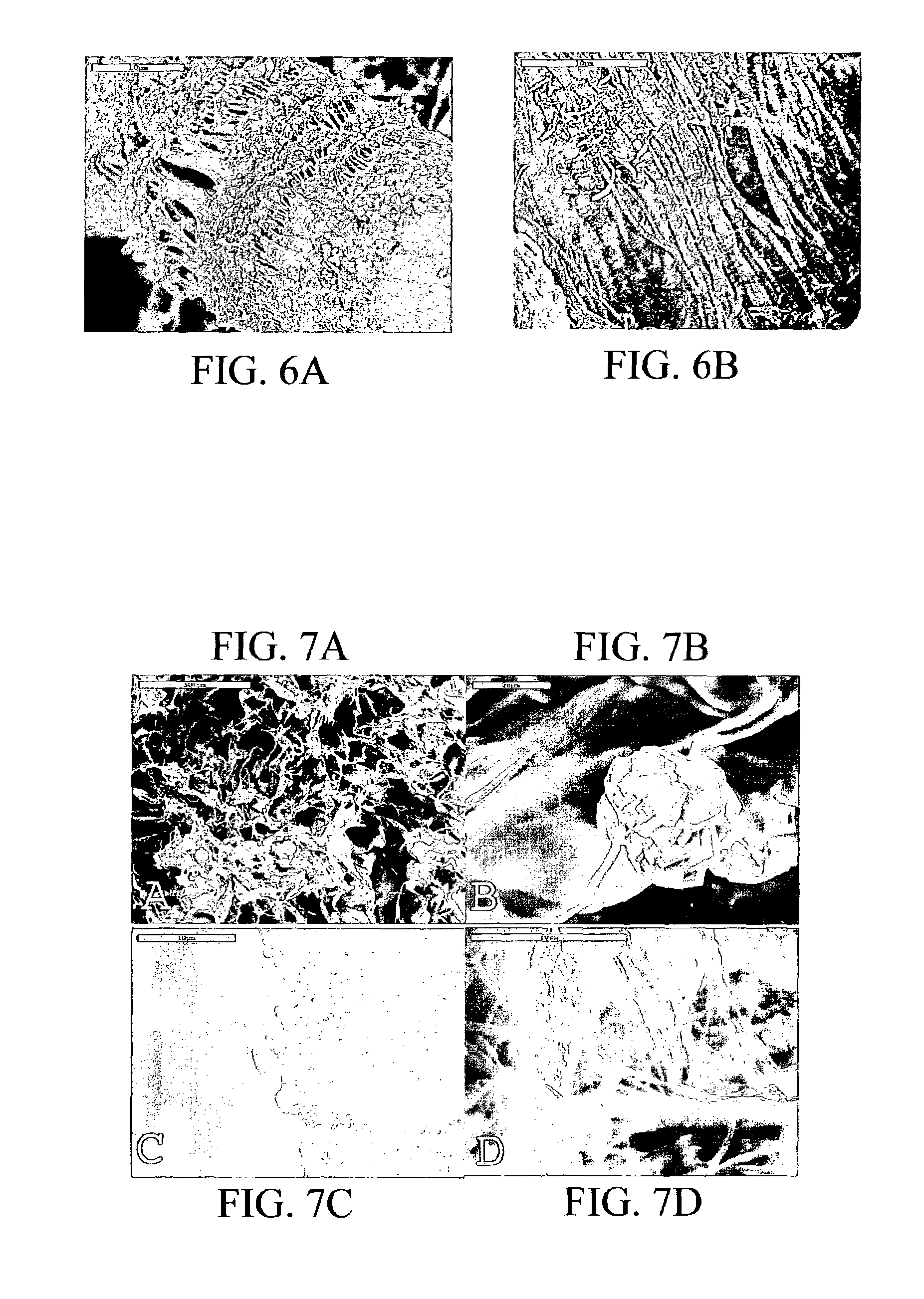Process for making organic/inorganic composites
a composite and organic technology, applied in the field of organic/inorganic composites, can solve the problems of lack of toughness, brittleness, prone to cracking, and no one successfully mimics the composite or microstructure of bone, and achieves the effect of superior infiltration
- Summary
- Abstract
- Description
- Claims
- Application Information
AI Technical Summary
Benefits of technology
Problems solved by technology
Method used
Image
Examples
example 1
Mineral Fibers
[0089]In the absence of acidic polymeric additives, rhombohedral crystals of calcite approximately 40 μm in size were produced. In the presence of poly(aspartic acid), nonequilibrium morphologies were produced, such as crystalline thin films of calcite and aggregates of distorted crystals (which seem to be a hybrid of solution and PILP formed crystals and are a common by-product of the in vitro reaction). Interestingly, some of the aggregates contained fibrous crystalline extensions, as shown in FIGS. 3A and 3B. In one study, in which time-lapse video was used to envisage their formation, it was observed that these fibers are initially isotropic, and they “grow” from isotropic gelatinous globules. The “fibers” became birefringent with time (several hours), and appear to be single-crystalline, as evidenced by the uniform extinction direction in cross-polarized light, as shown in FIGS. 3A and 3B. It became apparent that these amorphous fibers were being “extruded” from t...
example 2
Mineralization of Collagen with Calcium Carbonate
[0093]The PILP mineralization of bovine Achilles tendon type-I collagen showed interesting results. The individual fibers of the bovine collagen became coated or encrusted by a film of CaCO3. In some regions on the collagen fibers, the mineral film was patchy and in the form of isolated tablets (FIGS. 4A and 4B). Because there is a lack of facets in PILP formed crystals, energy dispersive spectroscopy was used to verify that these films and tablets are composed of CaCO3. Interestingly, the CaCO3 “tablets” appear to have preferentially deposited along the fibers in a banded pattern (FIGS. 4A & 4B). It is not clear if the PILP phase was deposited in those locations due to topography (such as defects or kinks along the crimped collagen backbone), or if some more specific templating interaction is occurring between the PILP phase and organic matrix.
[0094]The CELLAGEN sponge (which is reconstituted bovine collagen) provides a better substr...
example 3
Mineralization of Collagen with Calcium Phosphate
[0098]The results for the CaP system were very similar to the CaCO3 system, but with some differences in the mineral texture. The XRD spectrum of the mineralized collagen (not shown) shows peaks consistent with HA, although some peak shifts and differences in peak intensities are noted, which seem to suggest polymer-mineral interactions are prevalent (Sivakumar, M. et al. [2002] Biomaterials, 23(15):3175-3181). The mineralized CELLAGEN was also subjected to an acid etch treatment to remove excess mineral, and showed very similar results to the CaCO3 composites. A periodic banding pattern is seen for the more protected mineral (FIGS. 8A and 8B), and crystals have a similar disk-like morphology. At this point, it is not clear if these are single crystals, or just thick clumps of remnant mineral phase. In some regions of the sample, the mineral remnants were less organized and the morphology was different, exhibiting a more platy shape (...
PUM
| Property | Measurement | Unit |
|---|---|---|
| Temperature | aaaaa | aaaaa |
| Temperature | aaaaa | aaaaa |
| Temperature | aaaaa | aaaaa |
Abstract
Description
Claims
Application Information
 Login to View More
Login to View More - R&D
- Intellectual Property
- Life Sciences
- Materials
- Tech Scout
- Unparalleled Data Quality
- Higher Quality Content
- 60% Fewer Hallucinations
Browse by: Latest US Patents, China's latest patents, Technical Efficacy Thesaurus, Application Domain, Technology Topic, Popular Technical Reports.
© 2025 PatSnap. All rights reserved.Legal|Privacy policy|Modern Slavery Act Transparency Statement|Sitemap|About US| Contact US: help@patsnap.com



